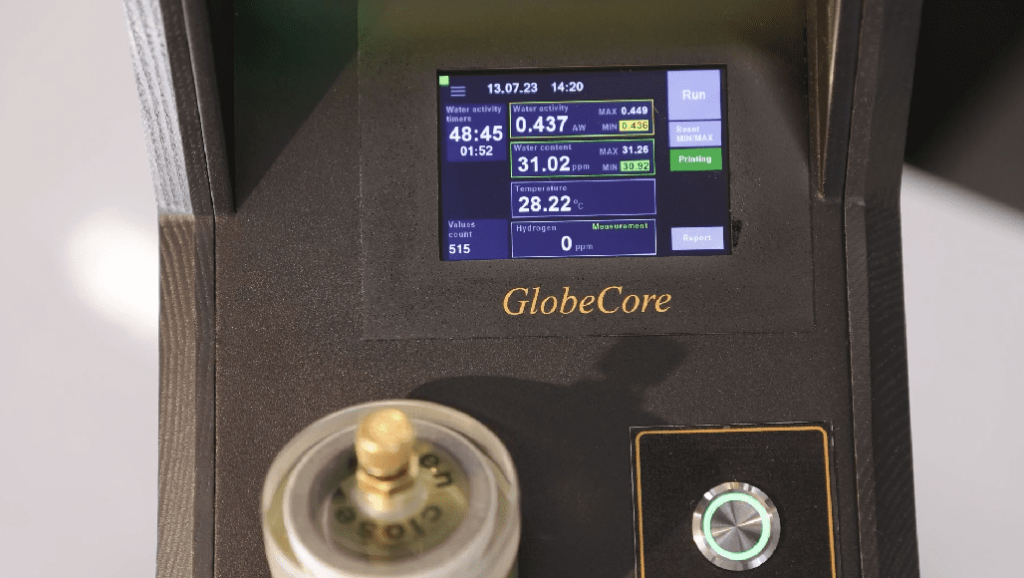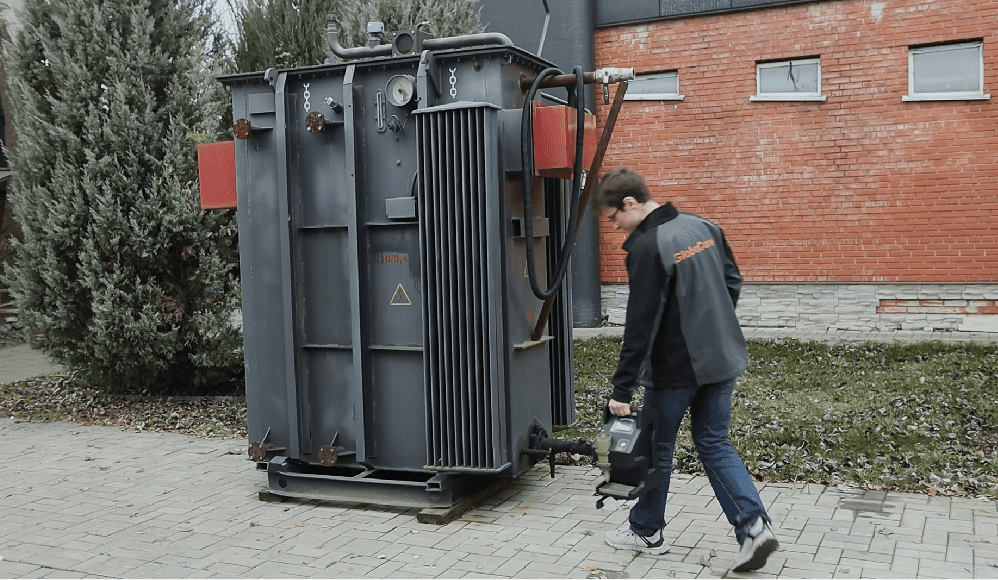Dissolved Gas Analysis of transformer oil in India is an important process, integral to ensuring the longevity of energetic infrastructure in a country burgeoning with industrial and technological growth. This procedure, blending chemistry with electrical engineering, stands as a silent sentinel against future failures in these critical power infrastructure components. Analyzing presence of the gases in transformer oil, experts can glean invaluable insights into the internal workings and potential breakage, making DGA an indispensable tool in the Indian electrical sector.
The Intricacies of classic dissolved gas analysis of transformer oil in India
Dissolved Gas Analysis (or DGA) of transformer oil in India is an intricate process that begins with the collection of oil samples. This first step is critical, as it sets the foundation for accurate analysis. The samples are carefully extracted to prevent contamination, which could skew the results. Once collected, the samples are transported to laboratories equipped with complicated gas chromatography equipment.
In the laboratory setting, the procedure of Dissolved Gas Analysis is conducted by warming the insulating oil. This heating initiates the liberation of various gases that are dissolved in the oil. The spectrum of gases released typically encompasses hydrogen, oxygen, nitrogen, carbon monoxide, carbon dioxide, ethylene, and methane. Each gas acts as a tell-tale sign of specific kinds of faults within the transformer. For example, a rise in the concentrations of hydrogen and methane is often indicative of low-energy arcing occurrences, whereas increased amounts of ethylene and ethane are generally signals of overheating situations.
The gas chromatography equipment separates these gases and measures their concentrations. This separation is achieved through a column within the chromatograph, where gases move at different speeds, allowing for their analyzation. The results are then meticulously analyzed by experts who interpret the gas patterns to diagnose potential issues in the transformer. This method is particularly effective in identifying problems before they escalate into major failures, thereby playing a crucial role in preventive maintenance.
Diagnosing Transformer Damages through Dissolved Gas Analysis
The second aspect of Dissolved Gas Analysis of transformer oil involves interpreting the data obtained from gas chromatography to diagnose potential transformer damages. This diagnostic process is based on understanding the sources and implications of each gas.
Hydrogen: Often the first gas to form in fault conditions, hydrogen can indicate a range of issues, from overheating to arcing.
Carbon Monoxide and Carbon Dioxide: These gases are typically occurred from the damaging of paper insulation. A high ratio of carbon monoxide to carbon dioxide can indicate severe insulation degradation.
Methane, Ethylene, and Ethane: These hydrocarbon gases are formed under various temperatures and can indicate the severity of thermal faults.
Oxygen and Nitrogen: While less diagnostic, changes in their levels can provide insights into oil degradation or external contamination.
Knowing the ratios of these gases, engineers can determine the type and intensity of faults within the transformer. For instance, a high content of hydrocarbons might suggest thermal faults, while an increase in hydrogen and carbon monoxide could indicate electrical discharges or failures with insulation.
Through DGA, it’s possible to identify not just the presence of faults but also their progression over time. This temporal analysis allows for predictive maintenance, where actions can be taken to rectify issues before they lead to transformer failure or operational disruptions. Consequently, DGA is not just a tool for maintenance, but a strategy for extending the life and enhancing the reliability of transformers in India’s power grid.
Hydrogen: The Foremost Indicator in Chromatographic Analysis of Transformer Oil
The role of hydrogen in the chromatographic analysis of transformer oil, especially in the context of Dissolved Gas Analysis in India, is highly significant. As the smallest and lightest of all gases, hydrogen often forms the initial by-product of various fault conditions within a transformer. Its detection, therefore, is key to the early identification of potential issues.
Hydrogen is generated in a transformer due to various reasons:
Electrical Disturbances: Electrical disturbances like are: arcing, corona discharge, and partial discharges that are primary contributors to hydrogen formation. These disturbances can occur due to insulation breakdown, loose connections, or other electrical anomalies within the transformer.
Overheating: Excessive heat can lead to the breakdown of oil and solid insulation, generating hydrogen among other gases. Different temperatures produce different gas patterns, with hydrogen being one of the first detectable signs of thermal stress.
Detection and Analysis
Detecting hydrogen in transformer oil involves sophisticated technology and methods:
Gas Chromatography: This method separates hydrogen from other gases dissolved in the oil, allowing for accurate measurement of its concentration. The chromatograph uses a column that differentiates gases based on their speed of movement, effectively isolating hydrogen for quantification.
Solid State Sensors: In some advanced setups, solid-state sensors immersed directly in the transformer oil are used for continuous monitoring of hydrogen. These sensors are highly selective and can detect even minute changes in hydrogen concentration, providing real-time data for preventive maintenance.
Importance of Hydrogen Measurement
Early Fault Detection: The presence of hydrogen, even in small amounts, can be an early warning sign of developing faults. This early detection is crucial in preventing minor issues from escalating into major failures.
Thermal Fault Grading: By analyzing the rate of hydrogen generation and its concentration relative to other gases, it’s possible to grade the severity of thermal faults within the transformer.
Challenges in Hydrogen Analysis
Sensitivity: The detection of hydrogen requires highly precise equipment, as it is often present in low concentrations, especially in the early stages of fault development.
Interference from Other Gases: While hydrogen is a key indicator, its interpretation must be done in the context of other gases present in the oil. This requires a comprehensive analysis strategy that considers the complete gas profile.
Express Analysis of Hydrogen Content Using the TOR-2 Device
For determination of dissolved Gas Analysis of transformer oil in India, more clients use the TOR-2 transformer oil express-tester particularly for the express analysis of hydrogen content. This device provides rapid and accurate insights into the health of transformers.
The TOR-2 employs a highly selective solid-state sensor that is immersed directly in the mineral oil. This direct approach to measuring hydrogen content is what sets the TOR-2 apart, providing immediate and accurate readings.
The solid-state sensor used in TOR-2 is specifically designed to detect hydrogen at very low concentrations, which is determinant for early fault detection. Its accuracy is pivotal in the preventive maintenance of equipment, ensuring that even the smallest changes in hydrogen levels are detected.
Unlike traditional methods that require oil samples to be sent to laboratories, TOR-2 allows for on-site, real-time monitoring. This capability enables immediate decision-making and action, which is essential in managing transformer health proactively.
The TOR-2 provides quick results, which is essential for time-sensitive situations where immediate decisions can prevent further damage to the transformer.
Designed with operational simplicity in mind, the TOR-2 requires minimal technical expertise to operate. Changing the sample only involves replacing the removable beaker and pressing the start button for measurement.
The device is suitable for use with a variety of transformer oils, including mineral insulating oils and ether-based insulating oils.
Advantages of the dissolved gas analysis of TOR-2 Device
The TOR-2 device offers a suite of advantages that make it an invaluable tool in the Dissolved Gas Analysis of transformer oil in India.
- Moisture and Hydrogen Detection: It can detect both moisture and hydrogen even in small amounts, providing a comprehensive overview of the transformer’s condition.
- Compact Size and Portability: Its small size makes it easily portable, allowing for on-site testing in various locations and environments.
- Maintenance-Free and Cost-Effective: The device requires no consumables for measurements and minimal maintenance, making it a cost-effective solution for long-term transformer monitoring.
- Reliability of Measurements: The presence of other gases in the oil does not affect the reliability of the TOR-2’s measurements, ensuring accurate hydrogen and moisture readings regardless of the oil’s gas composition.
- Simple Calibration Process: Calibration of the TOR-2 is straightforward, ensuring consistent accuracy and reliability in its readings.
In conclusion, the TOR-2 device for dissolved gas analysis of transformer oil represents a significant advancement in the mineral oil analysis. Its ability to provide rapid, accurate, and comprehensive data on hydrogen and moisture content makes it a useful tool for the preventive maintenance and long-term management of transformers in India’s dynamic and ever-growing power sector.




 Hydrogen and Moisture ...
Hydrogen and Moisture ...